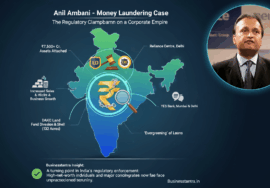Yaneek Page | How to make your small business profitable | Business
[ad_1]
QUESTION: I am a small business owner and I own a cookshop. I do great business there because people love my food, but my problem is I just can never see my way. Whatever I make I have to always spend back, and I am just not seeing my way out. I do not know what I am doing wrong. I work very hard, and I have six kids, so my goal is to have a better life and see where I can make it out. I know I am doing something wrong, but I don’t know what that is. Could you help me with some advice?
— Cookshop owner
BUSINESSWISE: In answering the question ‘What am I doing wrong?’, I must first acknowledge the things you’re doing right and place them in proper context when it comes to building a worthwhile business. You have set a wonderful foundation for success by consistently providing high-quality offerings to attract and maintain a customer base that is in love with the food and loyal with their patronage.
These are fundamentals I hope you will guard jealously. The missing ingredient at this point is that you ‘never see the way’, which I assume means you’re not realising the desired profits.
Profit has a simple recipe, which is to earn and collect sales that exceed the expenses the business incurs to make those sales.
Based on the limited information shared, there are several things you could be doing wrong that prevent you from achieving the profits you want. Here are five possible reasons your profits are lagging:
1. Incorrect pricing: It is possible that you are pricing your menu too low, which results in reasonable sales volume but low sales value. If this is the case, the rising cost of food, transportation and electricity would only serve to exacerbate the problem and further reduce profits.
In this case, the solution would be to increase your prices to attain the desired profit level – mindful of what the market will tolerate – and to create a pricing policy that demands frequent review, especially in the current environment.
Across the country you will observe that popular fast-food restaurants frequently increase the cost of their meals, with an explanation to the public that the price changes are aligned to increased expenses.
2. Pilferage: Unfortunately, theft is a common problem in your industry, including either the theft of raw materials or cash from the register, and so on. I know that cookshops still handle a lot of cash, which would make your business highly vulnerable. Your accountant can assist with determining if you are suffering losses and make recommendations to reduce the risk of theft.
Possible solutions for pilferage would include stronger surveillance, encouraging customers to pay with cards not cash, stricter cash management, frequent audits, proper reconciliation of receipts and other financial records.
3. Poor expense management: You may not be managing your expenses as judiciously and aggressively as you should be, and/ or that the company is burdened by your personal expenses which are outside the scope of business inputs. The solution would be to create an appropriate budget and stick to it as best as possible. That budget should estimate your income and expenses for at least the rest of the year.
At the end of each month you can compare your budgeted spend with your actual spend, and your budgeted profits with actual, etc. Holding yourself accountable to disciplined financial management is critical for you to see your way.
4. Weak procurement practices: If you want to grow your business profitably then good purchasing management could be your secret sauce. It will allow you to maintain high quality, consistency, and reduce waste/spoilage as you scale, which can boost profits.
A solution to weak procurement would be to do online research, e-courses, and even consult with a procurement expert in this field if possible to help you create appropriate procedures and even connections with suppliers. You can explore Linkedin to find procurement specialists with experience in food and hospitality.
5. Lack of diversity in income streams: Any quest for profit maximisation at this stage would require full utilisation of your assets now and a longer-term plan to diversify income streams and market segments in 2023 and beyond.
Simply put, are you making all the profits possible from what you have at your disposal now? Are your opening hours adequate? Are you promoting the business sufficiently? Can you do more to attract different and even more lucrative customer types such as catering services targeted at event organisers and other small businesses? Does your premises have space to expand dining?
The solution to vulnerable income streams is to create a strategic plan for growth that prioritises diversification.
What I have shared so far is a preliminary list of possible reasons for watered-down profits. It is not exhaustive. Therefore, there could be other reasons, not identified here, that could be the source of your challenges.
I recommend sitting with your accountant and going through your financial statements – particularly the income statement – with a fine-tooth comb to pinpoint the source of your problems otherwise you risk applying the wrong solutions.
Good luck and one love!
– Yaneek Page is the programme lead for Market Entry USA, a certified trainer in entrepreneurship, and creator and executive producer of The Innovators and Let’s Make Peace TV series. yaneek.page@gmail.com
[ad_2]
Source link










